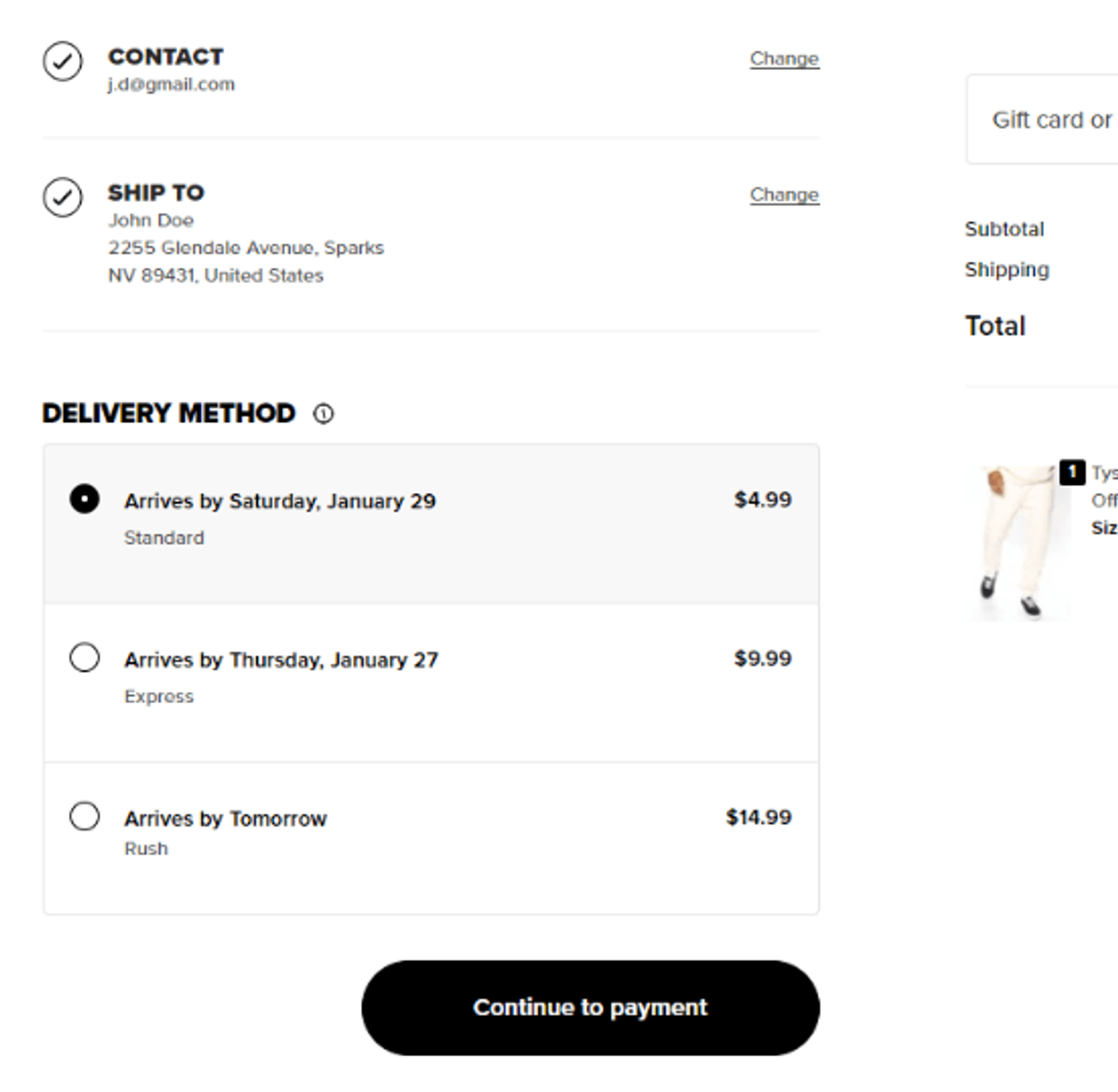
Meeting customer shipping expectations is an art, a fine balance between speed and efficiency, and when you get it right, the results can be nothing short of a standing ovation from your customers.
Mastering the delivery experience isn’t just an operational necessity; it’s a superpower that can drive exponential growth for your business. It all begins at checkout, where customers expect to be told exactly when their order will arrive and how much it’s going to cost.
Studies have shown that a staggering 60.7% of customers are inclined to finalize a purchase if they can view the delivery times while their items are still in their shopping cart. The message is clear: Transparency and clarity in delivery time frames have a big impact on a customer’s buying decision.
The Common Pitfall: Over-Specification
Despite the above knowledge, many businesses fall prey to the common pitfall of offering overly specific shipping service levels, often showcasing actual carrier services instead of simply indicating delivery time frames.
Imagine a checkout page littered with shipping options like “USPS Priority Mail”, “FedEx 2-Day”, “FedEx Ground”, “UPS 2nd DayAir”, “UPS Ground”, and “USPS Ground Advantage”. While rooted in the good intention of offering every option to customers, this strategy misaligns expectations and inadvertently creates a disjointed customer experience. This comes down to 3 reasons:
The Winning Strategy: Focus on ‘When,’ Not ‘How’
A winning strategy is to streamline the options into simple, understandable categories such as ‘Economy’, ‘Expedited’, and ‘Overnight’. This not only avoids confusion but also sets a clear and realistic expectation, fostering a trustworthy relationship between you and your customers.
These options should be accompanied by a clear expected delivery day.
Again, 60.7% of online shoppers want to see delivery dates at checkout.
Make this easy for them and display it next to the shipping options on screen!
Opting for something like ‘3 Days’ or displaying the actual date both work. If you display the number of days, just make sure the customer knows this is from the time the order is fulfilled, not placed.
As a rule of thumb, economy shipping should arrive in 5-7days, expedited in 2-3, and overnight in 1 day. These are the standards online shoppers have come to expect and the timeframes that leave you, the shipper, with optionality to provide a cost-effective and delightful shipping experience.
Added Benefit: Turn a Cost Center into a Profit Center
One hidden gem of providing delivery date guarantees instead of specific service options at checkout is the ability to find the most cost-effective option that will arrive in a specified time frame.
Let’s look at some examples. Let’s say you have a warehouse in New Jersey and your customer placed an order from New York City.
At checkout they paid extra for overnight delivery.
Upon looking at delivery times, you see that UPS Ground will get to the customer on the same day as UPS Next Day Air.
The difference is that Next Day Air would cost you $50+ and Ground only costs $12.
The customer get’s the package at the same time and you save $38. If the customer had selected Next Day Air at checkout, you would be bound to that delivery service.
This simple change not only gives your customers a better experience but allows you to turn a cost center into a profit center when leveraged correctly. Alternatively, you could use this method to offer lower cost expedited shipping options to your customers at checkout and increase conversion even further.
If you don’t have the time to manually select the lowest cost shipping option for every order, String does it for you automatically. Brands and 3PLs who use ShipStation for fulfillment, see an average of $1.07 in savings per shipment with String. The best part is, your delivery times aren’t effected. You can get a free test on your actual shipping data to find out how much String can save you. Visit www.meetstring.com/shipping-test to request your report.
The Bottom Line
When your shipping and delivery experience is simple, low cost, and fast, you build brand equity that keeps customers coming back for more.
A great place to start is by presenting simple shipping options accompanied by delivery dates at checkout.